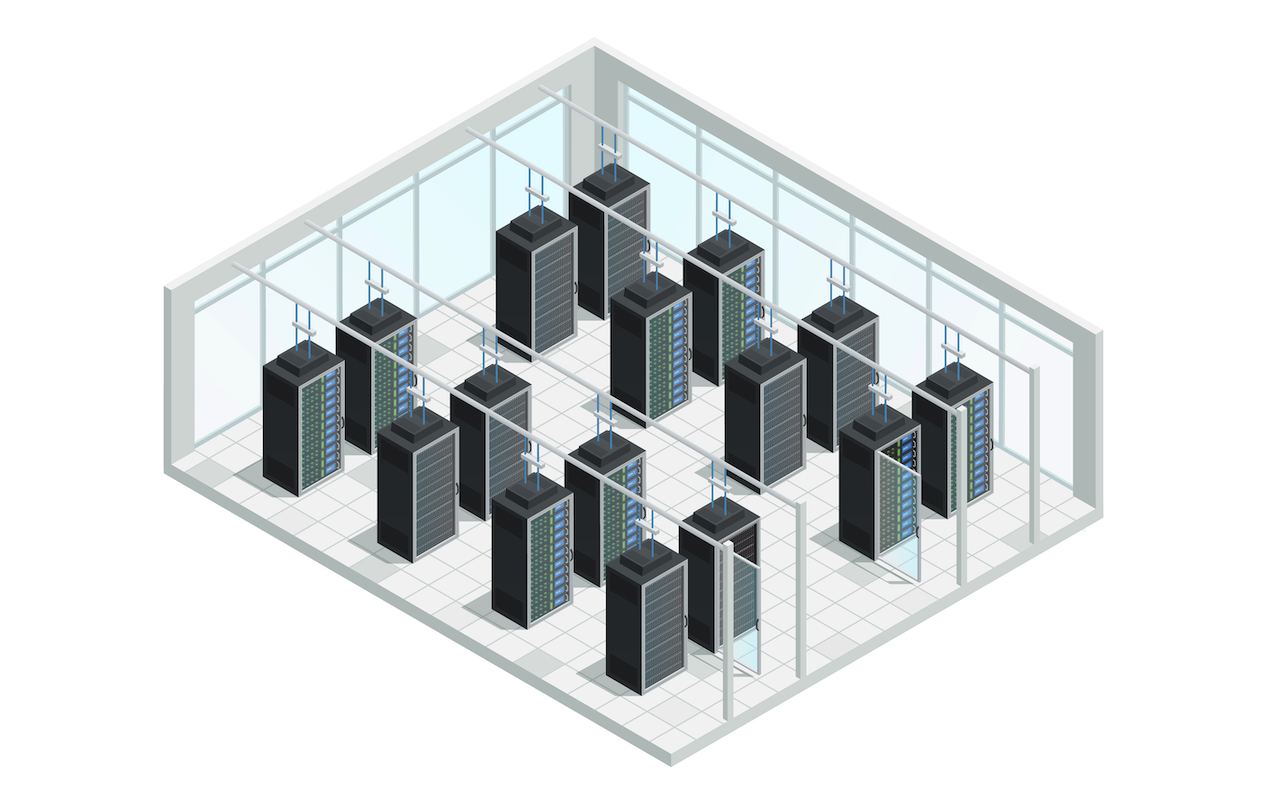
Efficient data center cooling is critical to maintaining server performance, reliability, and energy efficiency. As computing density increases, traditional air conditioning methods alone are no longer sufficient. Selecting the right data center cooling system types and applying the right server rack cooling best practices can significantly reduce energy consumption while extending equipment lifespan.
Why Data Center Cooling Matters
Servers and networking equipment generate massive amounts of heat during operation. Without effective data center cooling methods, internal temperatures can quickly exceed safe limits, causing:
- Hardware failures and downtime
- Reduced equipment lifespan
- Energy waste and increased operational costs
- Compromised system performance
Properly designed data center cooling techniques ensure optimal airflow, stable temperatures, and minimal power usage.
Types of Data Center Cooling Systems
There are several types of cooling system in data centers, each with its advantages depending on density, scale, and environmental conditions.
1. Air-Based Cooling Systems
The most common approach uses chilled or conditioned air circulated through the server room.
- Raised Floor Air Distribution: Cool air enters from perforated tiles beneath racks.
- Hot Aisle / Cold Aisle Configuration: Separates hot and cold air streams for efficiency.
- In-Row Cooling Units: Positioned between racks to provide targeted cooling near high-density zones.
Air systems are reliable and simple but can be less efficient for high-density server environments.
2. Liquid Cooling Systems
Liquid-based cooling is gaining popularity as power density increases. These data center cooling system types use water or dielectric fluids to absorb heat directly from equipment.
- Rear Door Heat Exchangers: Capture heat at the rack exhaust.
- Direct-to-Chip Cooling: Circulates coolant through cold plates attached to CPUs or GPUs.
- Immersion Cooling: Submerges components in non-conductive liquid for maximum heat removal.
Liquid cooling provides superior thermal performance but requires specialized design and maintenance.
3. Hybrid Cooling Systems
Many modern data centers combine multiple data center cooling methods. For example, pairing precision air conditioning with liquid cooling for high-density racks. This hybrid approach maximizes flexibility and redundancy.
Server Rack Cooling Best Practices
Regardless of which types of server cabinet cooling systems are used, effective implementation depends on solid operational practices.
- Optimize Rack Layout: Adopt hot aisle / cold aisle containment to separate intake and exhaust air. Position server fronts (air intakes) toward cold aisles and rears (exhausts) toward hot aisles. Adding containment barriers further prevents air mixing.
- Seal Gaps and Empty Spaces: Install blanking panels in unused rack slots and seal cable openings to eliminate recirculation of hot air into cold zones.
- Manage Airflow Direction: Ensure all servers follow front-to-back airflow. Avoid placing devices with side or reverse airflow unless additional ducting or containment is used.
- Organize Cables: Poor cable management obstructs ventilation. Route cables neatly and use vertical managers or overhead trays to maintain clear airflow paths.
- Monitor and Control Temperature: Implement real-time monitoring at rack inlets and outlets. Intelligent DCIM tools help analyze temperature gradients, detect anomalies, and automatically adjust cooling output for energy efficiency.
- Use Localized Cooling: For high-density racks, consider localized solutions such as in-rack cooling, rear door heat exchangers, or self-contained rack units with built-in chillers. These systems target hot spots directly, reducing strain on facility-wide HVAC systems.
Selecting the Right Data Center Cooling System Type
Choosing between different types of cooling system in data center depends on:
- Power Density: High-density environments benefit from liquid or hybrid cooling.
- Environmental Factors: Ambient temperature, humidity, and dust levels affect system choice.
- Operational Costs: Air systems are cheaper to install but may use more energy long-term.
- Scalability: Modular or hybrid systems allow expansion as data demand grows.
- Reliability Requirements: Critical facilities should include redundancy and backup cooling units.
No single method fits all. The ideal setup balances cost, efficiency, and sustainability goals.
Emerging Data Center Cooling Techniques
Modern data centers increasingly adopt advanced technologies to improve efficiency:
- Free Cooling: Uses outdoor air or water when environmental conditions allow.
- AI-Based Control Systems: Predictive algorithms adjust cooling dynamically based on workload.
- Liquid Immersion Solutions: Offer high thermal performance with minimal energy waste.
These innovative data center cooling techniques not only improve efficiency but also support green IT initiatives.
Conclusion
As computing demands continue to grow, effective thermal management is no longer optional. Implementing the right data center cooling methods, choosing efficient data center cooling system types, and following proven server rack cooling best practices ensures reliability, performance, and sustainability. Whether using traditional air cooling or advanced liquid systems, thoughtful design and ongoing optimization remain the foundation of a truly efficient data center.
Featured Image by Freepik.
Share this post
Leave a comment
All comments are moderated. Spammy and bot submitted comments are deleted. Please submit the comments that are helpful to others, and we'll approve your comments. A comment that includes outbound link will only be approved if the content is relevant to the topic, and has some value to our readers.

Comments (0)
No comment